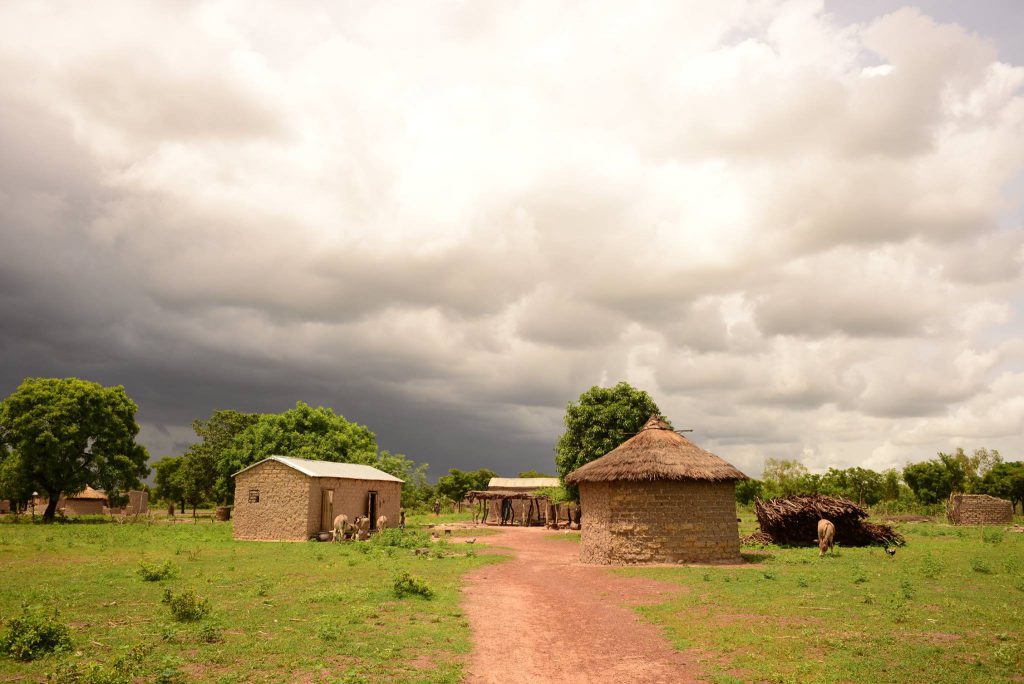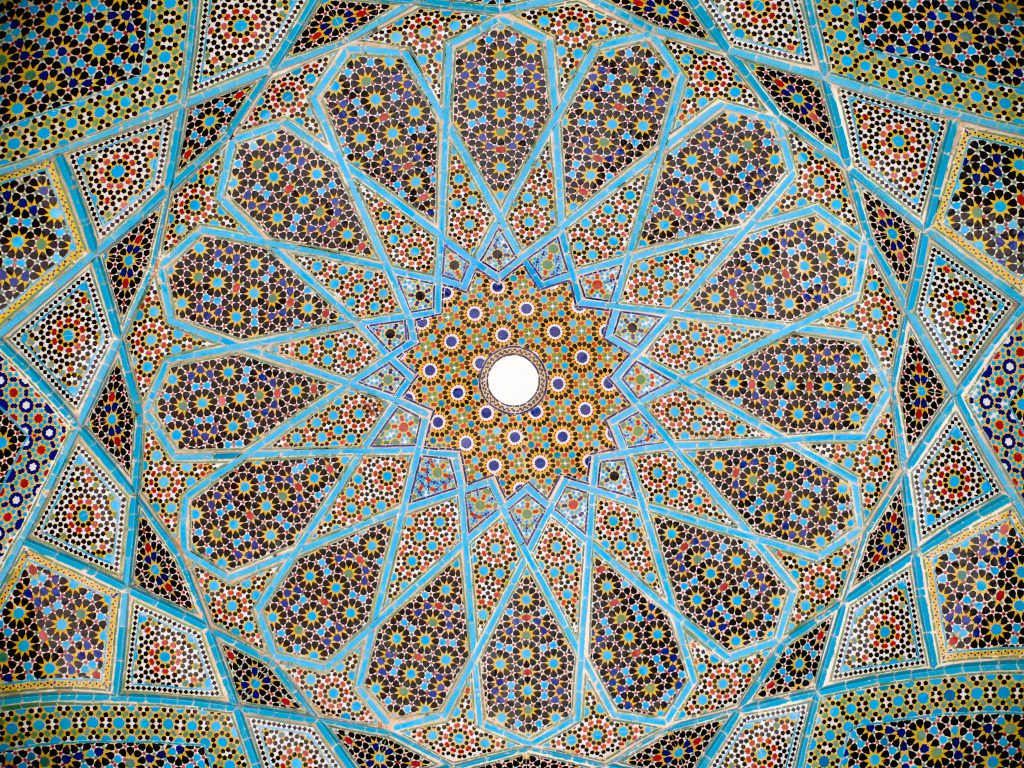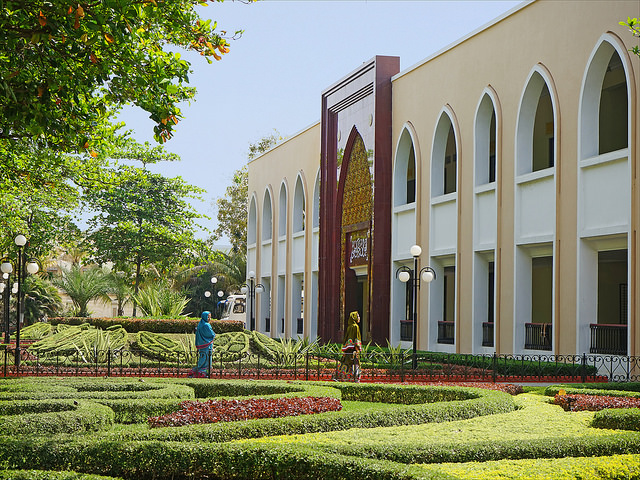Part II–Medicalising khatna within the Bohra community: A Struggle of Tradition and Modernity

By Fatema Kakal (This is Part II in a series about female genital cutting within the Bohra community. Read Part I here.) While religion and religious leaders, along with culture and tradition can be drivers of female genital mutilation/cutting (FGM/C), law can play an additional critical role in disincentivizing khatna. The arrests in the U.S. and Australia due to the medicalisation of FGM/C, led to the reiteration of laws in countries that prohibited FGM/C. Laws in many countries around the world critique FGM/C as a human rights violation and child abuse. While some consider these laws to be racist, this leads to a feeling of marginalization and alienation due to the attack on traditional and cultural value systems. People became more conscious of the laws, and began reconsidering khatna, because of the risks involved. These laws helped initiate dialogue and discourse. The Bohras are a fairly progressive and modern community, where traditions are not separate from their modernity, but play a crucial role in consolidating their Bohra identity. Continuing khatna defies Western notions of modernity and embraces tradition. Instead of abandoning tradition, the Bohras are renegotiating the traditional practice and embrace modernity through medicalising khatna. Medicalisation is a tool to modernize and legitimize khatna, but also serves as a technique for social control. By supporting medicalisation, validated by modernity, and establishing khatna as a safe and religious practice, the clergy is reinventing and perpetuating khatna as a traditional practice, responding to external pressures that threatened to marginalize or alienate the Bohras. The clergy is thus reiterating and reinforcing Bohra identity as being one of modernity and tradition. Thus, khatna was no longer taboo, and a growing discourse has led to people taking increasingly different positions, and making more conscious decisions about continuing the practice. While mothers and women of the family used to be primary decision-makers of continuing khatna for the daughters of the family, fathers are increasingly involved in making the decision. It is no longer an extremely hidden practice, and parents do research before making the decision whether or not to cut their daughters. While some people follow mandates by religious leaders, others find it important to follow the law. People are conscious of the potential harm. For the devout, tradition must be followed, but by ensuring that harm is minimized. They choose to visit medical professions for khatna. For others, the risks of khatna outweigh its religious importance, and they have decided to abandon the practice. For others, consent is crucial, and believe khatna requires a girl’s consent. Since children are incapable of giving informed consent, people believe their daughters can choose to undergo the procedure as an adult, thereby making an informed decision. Thus, the religious clergy’s pastoral power plays an important role in influencing people’s decision to continue khatna. Medicalisation of FGM/C can help negotiate embracing tradition and modernity. However, law also plays an important role in helping end the practice. The growing discourse around the practice has led to people making informed, conscious decisions about following khatna. FGM/C is conceptualized as a health and human rights issue, and a children’s rights issue, which is universal. Thus, efforts against FGM/C should be focused on balancing universalization of children’s rights, human rights, and multiculturalism. Additionally, law plays a crucial role, because legislation can provide a universal stance against the practice, which can be used as a strong justification against it. Thus, community-wide change is required for individual families to abandon FGM/C, through education and activism from within the community, backed by law.
Why female genital cutting still continues: Exploring the reasons behind its sustenance

By Debangana Chatterjee The reasons why female genital cutting (FGC) continues are multifarious and overlapping. Complex and interconnected sets of reasons for FGC are woven into the faiths of the communities. Thus, faith becomes the genesis of these reasons, making FGC considered to be beneficial by the communities. These reasons can be broadly grouped as traditional, socio-cultural, sexual and hygienic, but are also closely connected with each other: • Traditional: According to Anika Rahman and Nahid Toubia, authors of Female Genital Mutilation: A Guide to Laws and Policies Worldwide, for a number of communities FGC is considered a rite of passage to womanhood and is driven by traditional beliefs. This womanhood is often believed to add to the marriageability of the circumcised women. The practice is carried forward by the women belonging to these communities for generations. Though there is no direct mention of the practice in the Quran, hadiths became a traditional source of its justification. At this juncture of faith, tradition paves the way for the socio-cultural reasons behind the practice. Dogon people of Mali / Photo by Jenny Cordle • Socio-Cultural: Among practicing communities, the practice in many ways becomes a hallmark of communal identification, as it garners acceptability and induces social conformity within communities. Some communities are also believed to have adopted FGC due to contiguous cultural influences. Considerable communal pressure for performing FGC involves the threat of social ostracism. Local structures of authoritative forces ensure the continuation of the practice by implementing these measures on the basis of their social norms. As the practice remains one of the sole sources of income for traditional cutters, economic reasons as a corollary to the socio-cultural ones also drive the practice. • Sexual: FGC is believed to control women’s sexual behaviour. There are claims of it restricting women’s sexual urges. Extreme procedures, such as infibulation, are used as mechanisms to keep women’s premarital virginity and marital fidelity in check. Due to the extreme pain that intercourse typically causes in infibulated women, women do not get sexual pleasure. FGC is frequently claimed to be used as an impediment toward the “promiscuous” nature of women. • Hygienic: Many believe the removal of a part of female genitalia amounts to cleanliness. In this regard, cleanliness in the hygienic sense results in physical purity, which is ultimately believed to pave the way for spiritual purity. This understanding of purity becomes closely entangled with the cultural beliefs of femininity and modesty. Despite creating this broad rubric of prominent reasons, the reasons noticeably overlap and are distinct in manifestation when it comes to the customs of specific communities. In certain cases, there are multiple driving factors, whereas in other cases the manifestations of these reasons are even more particularistic. For example, as Laurenti Magesa, the author of African Religion: The Moral Traditions of Abundant Life, explains among the Kikiyu people of Kenya, FGC is celebrated as a mark of womanhood. Among the Bambuti and Thonga community, during the procedure girls are shown no mercy and are treated with ruthlessness as a sign of their gallantry and bravery. Among certain groups in Tanzania and Somaliland, infibulation is believed to form a “chastity belt” around the skin of female genitalia. Magesa underlines a few reasons for FGC specific to diverse African communities. Primarily, it is conceived as a mark of valour and of enduring physical pain within the community. This pain is thought to teach girls about sacrifice for the community as well as a sense of belonging. Finally, many believe that the practice strengthens the community bond among generations and knits the community together. Among many communities, girls are prepared for the practice through an initiation ceremony. But among the Zaramo people of Tanzania, the girl is secluded for a substantial period after circumcision. During this particular period, girls are trained and informed about obedience in general, conformity to social norms, fertility, and childbirth. According to Kouba and Muasher, the Dogon and Bambara people of Mali believe that a child, born with both male and female souls, is also possessed by wanzo. Wanzo is believed to be evil residing in both the male and female genitalia and thus, cutting as a process helps in getting rid of wanzo. In India, Bohra Muslims are evidentially the most significant community practicing FGC, which is termed as khafz. As per the believers of the community, Da’i al-Mutlaq, also known as Da’i, hold an authoritative, infallible status in the community. Da’i or Syedna (as referred to by the Dawoodi Bohras) is considered to be the sovereign leader, spiritual guardian and temporal guide of the community. As Da’i considers Daim-ul-Islam as the binding religious text for the Bohras, diktats of the text are taken as truth by the community members. It is a text written by Al-Qadi al-Nu’man who served from the 11th to the 14th Imam of the Shia lineage. In this text, the Prophet is believed to advise for a simple cut of women’s clitoral skin as this assigns purity on women and may make them more “beloved by their husbands”. The community mostly puts forward religious reasons based on their faiths in support of the practice. There are multiple narratives justifying the practice among the Bohra community members. A substantial number of community members believe that the practice tames women’s sexual urges and preserves modesty. Many claim that the nicking of the prepuce helps increase women’s sexual pleasure by exposing the tip of the clitoral hood. In this regard, it is often put forward in the same breath as the genital altercation procedures of clitoral un-hooding. Similar narratives espouse that the practice induces purity among women. For them, if it is well within the rights of Muslim men to be spiritually pure by performing circumcision, it is unjustifiable to prevent women from attaining equivalent purity. In fact, in certain cases, there are convictions by the pro-FGC Bohras toward the futuristic scientific revelations about khafz’s perceived benefits. When faith becomes a part of people’s everyday life, life needs
Female Genital Cutting Diaries: My first encounter with the tradition of female genital cutting

by Jenny Cordle A decade ago I lived in a practicing, rural community situated in the lush, southern region of Mali, West Africa. Out of nearly 2,000 inhabitants living in mud-brick houses, a dozen were Christian. The rest were Muslim, and remain among the loveliest people I’ve ever met. Out of love and many other complicated reasons, the Sunni Muslim community members cut their girls, as is the case for why many Shia Muslim Dawoodi Bohra mothers and fathers perpetuate the practice 5,000 miles away in India and among diaspora communities such as the one in Detroit, Michigan. I am struck by how the impetus to cut has no bounds; how an impoverished Malian community that runs out of grain in the cold season finds the money to pay a cutter; and the lengths an educated, wealthy community such as the Dawoodi Bohras will go to protect the practice. My first encounter with the longstanding tradition of female genital cutting in Mali punctuated my Peace Corps service in Konza. The local midwife reluctantly confessed that a mass cutting was occurring; I’d made her promise to tell me the next time it happened. I ran to my house, grabbed my camera, and navigated the maze of mud bricks until I stumbled upon several elderly women and a group of girls in the midst of lining up for washing. I was visibly furious and knew I needed to calm down. I didn’t know what I expected to see, or if I would be capable of stopping it, but I had to go. photo by Jenny Cordle There’s a particular kind of hush that falls over Konza during a ritual cutting of girls. The pounding of millet is stifled by a thick silence. What is typically a loose order tightens its reins over a large pocket of the community, with children scattered along the edges. At least a dozen girls sat shirtless on the floor of a small dark room with their heads wrapped in patterned scarves typically reserved for women, and wearing small skirts of a different fabric. I searched their faces. There were dried tears and fresh ones. They were silent, their lives having been marked with a before and after by a woman who made it her job to perpetuate a harmful practice. Most of them looked about eight years old—the year I started writing stories and met my lifelong best friend, and thought about what outfit my Barbie should wear. I’d taken many portraits of youth in Konza. They were intense, gorgeous people with secrets I wanted to know but may never be able to handle. At the time I couldn’t process that they’d been physically and emotionally violated, but my shock and anger was apparent—too visible to the elderly women. I missed the cutting and thought I missed the cutter. I knew the cutter had come from Djobo, a neighboring community, based on conversations I had with friends. I envisioned her wielding an unsterilized razor, delegating older women to hold the girls down and making a series of quick, but painful cuts. I could see her promptly packing up, blessing the girls who bled too much and praising the ones who silently endured it. I could see her mounting a motorcycle, and then her back in the dust with her head wrap billowing. I knew she had money wrapped in her skirt: payment for a day’s work. I knew of her need for secrecy, which was honored by everyone in the village. No one would share exactly who she was or where she lived or why I couldn’t speak with her. I called a meeting with the village chief, along with my landlord and a few elders—the midwife, Binta, sitting next to me in the night as I spoke. I brazenly called for an end to the cutting. I mentioned the harmful effects—that these girls could die. Baji Kone, the chief, promptly told me that it would never happen again and thanked me for the visit. A few weeks later, many other girls were cut. I’d been appeased—but as a white American woman, who was I to pressure the chief to end one of the oldest rituals in Mali? I would learn that cutting in Mali was a sacred tradition that would not be cast in a violent light. It would be protected and blessed and carried on years later in Konza. I decided as a volunteer that it was not my place to interfere; doing so may have undermined my work in the community. It wasn’t until years after my service that I realized I wanted to explore and understand the motivations behind the practice of cutting. I knew the girls in Mali. They’d sat in my best woven chair under a porch made of tree branches and chatted with me daily. I wanted to know the cutters. Who were these women paid to inflict pain in the name of honor and purity? I’d learned Malian birthing customs, and experienced how many Muslims embrace death as God’s will, but the rites of passage for girls into womanhood was kept from me, so I ran toward it. (This blog is the first in a series of blogs meant to inspire a larger, global conversation about girls’ and women’s health and rights, cutting as a practice, and ideas for positive change. A series of conversations about cutting in my community in Mali led me to advocacy work at Sahiyo. My hope is that collectively we can gain an understanding of the practice, and in doing so, can encourage abandonment.)
Tracing the Origins of Female Genital Cutting: How It All started

By Debangana Chatterjee Though the exact reason for the origin of Female Genital Cutting (FGC) is unknown due to the dearth of conclusive evidences, multiple theories revolve around how the practice began. FGC precedes both the start of Islam and Christianity and is practised predominantly because of cultural traditions. FGC is not limited to a single community, religion or ethnicity. Rosemarie Skaine mentions that there are archival documentations indicating a Greek papyrus to have recorded women to get circumcised while receiving dowries around approximately 163 BC. In fact, there are several Greek scholars mentioning its prevalence before the advent of Christianity. Broadly, the practice is believed to have originated in Egypt where circumcised and infibulated mummies were found according to Frank P. Hosken. Gradually, it spread around the contiguous areas of the Red Sea coast among the tribes through the Arabian traders. In Hanny Lightfoot-Klein’s opinion, though the practice is believed to first have spread in the form of infibulation, clitoridectomy increasingly became the more acceptable form of FGC. During the Pharaonic era, the Egyptians believed in gods having bisexual features. Elizabeth Boyle recounts that these features were believed to reflect upon the mortals, with women’s clitoris representing the masculine soul and men’s prepuce that of the feminine soul. Thus, circumcision was considered to be a marker of womanhood and a way to detach from her masculine soul. As it became a socio-cultural norm, FGC became the utmost criteria for women’s marriage, inheritance of property and social acceptance in ancient Egypt. Lightfoot-Klein also suggests that population control was also one of the driving forces behind the practice as by controlling a woman’s sexuality; it kept the woman’s desires in check and made her sexually modest. Due to the narrowing of the vaginal orifice through infibulation, women would experience excruciating pain during sexual intercourse and thus, it becomes an effective measure to hinder premarital sex among women and ensure their fidelity. In fact, in places like Darfur, sudden desertification of arable lands made infibulation one of the population control measures. Boyle suggests the Egyptian practice of FGC and slavery can be correlated for providing an explanation of its origin. Before the advent of Islam, Egyptian rulers expanded their kingdom towards the southern region in search for slaves. As a result, Sudanic slaves were taken to Egypt and the areas nearby. Incidentally, slavery became commonplace with its aim to deliver servants and concubines to the Arabic world. As a result, women with stitched vaginas were in high demand due to the lessening possibilities that they would become impregnated. But after the arrival of Islam in the region, a strict prohibition towards enslaving other Muslims allowed the practice to get extended to other parts of Africa when the slave traders introduced infibulation among the non-Muslims to raise women’s value as slaves. This not only explains the introduction of FGC among North-African communities, but also explicates the coincidence of its spread in Africa simultaneous to the rise of Islam. In some cases, the practice has also sought its validation through Islamic scriptures. Doraine Lambelet Coleman says that one of the hadiths in Islam is thought to permit a limited form of cutting, though the hadith is also contested for being deficient of its genealogical authenticity. Despite the Prophet being explicit about sunna (tradition) on male genitals, FGC’s existence within Islam remains debatable. The practice was believed to be introduced in the South East Asian countries at around approximately 13th century, supposedly due to the reasons of Islamic conversion process after the change in regime. The predominant Shafi school of Sunni Islam in Indonesia and Malaysia justifies FGC as an Islamic practice and is culturally influenced by the Eastern part of the Arabian peninsula, the region where presently Yemen and Oman are situated. The justification for the practice in these countries come as they prescribe ‘nicking’ of the outer clitoral skin without really injuring the female genitals. In fact, this explains the burgeoning medicalisation of the practice in these two countries. In Singapore, the practice prevails due to the regional influence of Shafi Islam on the one hand and a few practicing ethnic Malay population on the other. The practice is rife among the Kuria, Kikiyu, Masai and Pokot people in Kenya, Zaramos in Tanzania, Dogon and Bambara people in Mali to name a few. Scholars have also indicated the income-generating facet of the practice in the face of unavailability of alternative livelihoods for the individual circumcisers. Though immigration due to slave exportation and other reasons is considered to be one of the predominant forces behind the spread of FGC in the West, L. Amede Obiora claims it was also reportedly performed on western women, especially in the United States, even in the 1950s as a cure to ‘unnatural female sexual behaviour’ that ranges from homosexuality, female masturbation to depression. References to ‘genital altercations’ in the Western countries are also not unfamiliar. In fact, Obiora also mentions that there are accounts of an English gynaecologist Isaac Baker Brown expressing his clear endorsement of such altercations in the early 1800s. To talk about India, the practice is prevalent among the Bohra community who came to the Western part of India from the North-African region as a trading community. The defenders of the practice in the community justify this as a stand-alone practice of khatna which, unlike other grave forms of it, only comes to denote removal of a pinch of clitoral skin bereft of its harmful effects. In this regard, often local circumcisers are being replaced by the medical professionals to highlight the hygienic conditions of its performance and gain greater legitimacy in its favour. On a whole, the practice has transformed and evolved dynamically since its origin. FGC through the course of its evolution came up with multiple facets and spread across cultures and geographic regions with various manifestations, meanings and narratives being attached to it. Tracing its origins, thus, not only helps in understanding its nuances but also minimises the tendency towards its
We need a Bohra Revolution

By: M Bohra Age: 23 Country: United Kingdom The ongoing investigation into Dawoodi Bohra doctors engaging in khatna, or female genital cutting (FGC), and the community leadership’s ambivalence regarding this practice, have once again brought up unanswered questions. What message is the leadership in India sending to the Bohra community when it disowns the doctors’ acts, not for their irreligiosity, but for their illegality in the West? Must the Bohra leadership accept the legal and moral responsibility of promoting khatna, especially since they advocate travelling to countries without FGM laws to continue this practice? Or can we expect them to continue throwing their misinformed, fanatical and grovelling followers under the bus to save themselves? Many Bohris, in the privacy of their friends and families, will complain about the strict social norms that regulate every act of our lives within the community: where we pray, what we wear, who we do business with, what our family roles are, who we befriend, what we say, how we dissent, how we think. These criticisms are kept out of the community arena by the authoritarian diktats of the leadership. They hold the power to socially boycott (which, for many community-linked businesses is linked to economic loss), extort money for officiating religious ceremonies (including permitting travel to the Hajj pilgrimage), and even denying burial in Bohra cemeteries. While we continue to chafe under this authoritarian religious regime, however, we must acknowledge our own prejudices. Bohris, despite all evidence, believe that we are God’s chosen people. We consider ourselves not only superior to non-Muslims (which is a broader Islamic problem), but even non-Bohra Muslims. We call our own community “mumineen” (the believers), and the others “musalmaan”. Even other Shia groups are generally only respected during the first ten days of Muharram, when we enthusiastically join our “Shia brothers” in the Ashura processions and sermons, only to exclude them from our lives on the eleventh day. We consider our mosques cleaner, our prayers more spiritual, and even our cemeteries as somehow more special. We are “blessed” to be ruled by tyrants, who guarantee us a heavenly afterlife in exchange for worldly money. Are we surprised that the leadership continues to promote a domesticated and desexualised ideal for our women, when it promotes a passive and unintellectual ideal for our men? It is important to remember that their power comes from our submissiveness, which is the result of our own prejudices. We need to introspect and question the foundations of our own biases. What is unclean about a non-Bohra mosque? What is inappropriate about performing the Hajj without being led by a Bohra priest? What is the problem with marrying outside the community? Can Bohra women question the religiously-sanctioned ideal of making rotis and handicrafts confined to their homes? Why do we have to control women’s sexuality through physical means, but not men’s? If the current system is broken and cannot be reformed, are we ready to create new religious and social spaces with other disillusioned Bohris? Can we create new inclusive and non-hierarchical spaces to end religious dogmatism, bring financial accountability, provide spiritual healing and engage in progressive social reform without prejudice? Here’s a little history lesson to conclude this piece. The office of Dai Al-Mutlaq, which is currently held through hereditary means by Mufaddal Saifuddin, is not the same as the position of the Imam, who is considered as the rightful spiritual and political successor of the Prophet in all Shia traditions. The first Dai was appointed by Arwa Al – Sulayhi, a long-reigning queen in Yemen, as a vicegerent (deputy) for the young Imam At-Tayyib. The succession of Dais was not always hereditary, and was likely based on spiritual and political merit. Increasing persecution drove the leadership to settle in Western India, where they were welcomed by a community of religious converts. Note how the position of the Dai was created by a powerful woman ruler (who probably wasn’t told to make rotis and handicrafts), not as a hereditary office, and owed its continuity to the goodwill of the new community of Bohris in India. Over the centuries, the leadership has forgotten who was in charge. It’s time for a reminder.
FGM and the myth of modernity among Dawoodi Bohras

By: Anonymous Age: 33Country of birth: IndiaCountry of current residence: USA I am a male born into a Dawoodi Bohra family. My brother and I had remarkably normal upbringings in the United States. We were members of one of the more secular congregations in the in the US. My parents always pointed out to me how different we were from other Muslim sects. Our community stressed education for our sons and daughters. Many women in our community are business owners, doctors, and primary bread winners. Wahabi, we were not. I distinctly remember watching an episode of the news program “20/20” with my parents when I was a “tween”. One of the pieces was on female genital mutilation in Somalia. We watched the whole piece and a hush came over the room…the kind of awkwardness one experiences when a love scene comes on while you’re watching a movie with your parents. I didn’t know why my parents were squirming, but in a few days everyone forgot all about it. Fast forward over a decade and I’m in a serious relationship with my now wife. A Dawoodi Bohra woman. The first time we were intimate she began crying uncontrollably. She told me what had been done to her. She herself didn’t know what had been done to her until she learned about it in college. She felt an electric shock like pain down to her toes when it was done, but I was the first to be rocked by the waves of that ripple effect. She felt scarred and damaged. She wanted so bad to connect with me intimately, but it could never happen. That had been stripped away from her along with her ability to be a complete woman, against her will, as a minor. We worked through it together. I went to her counseling appointments. I reassured her that our love would only grow stronger, but she and I both knew no one could ever give back to her what was lost in that moment. The “20/20” moment finally made sense. With two sons, my parents never had to make the gut-wrenching decision to physically alter their children, but to be perfectly clear, had either of us been a girl, there would have been overwhelming pressure to do it. The community would feed their boilerplate lies: “it is to ensure a good marriage”, “it is to make you a better wife”. I later found out from my parents that all the girls in my family had it done to them. I couldn’t stomach the thought. Why put up the front of modernity when 50% of your offspring are subjected to a medieval practice? Stop flaunting your women’s independence when your prerequisite for them to be complete spiritually is for them to be incomplete physically. My amazing wife has taught me so much. She has taught me forgiveness, and strength. I would certainly have been much more vindictive had I been put in her shoes. It is time for all Dawoodi Bohras to come to grips with this issue. It is a stain on the faith. It has no precedence in Islam, it irreversibly damages our women, and it runs counter to what we claim to be: modern, moderate Muslims. It’s time to bring this issue out of the shadows and into the light. This article was later republished in Gujarati. Read the Gujarati version here.
Now Bakersfield, CA has banned Khatna (FGM/C)!

